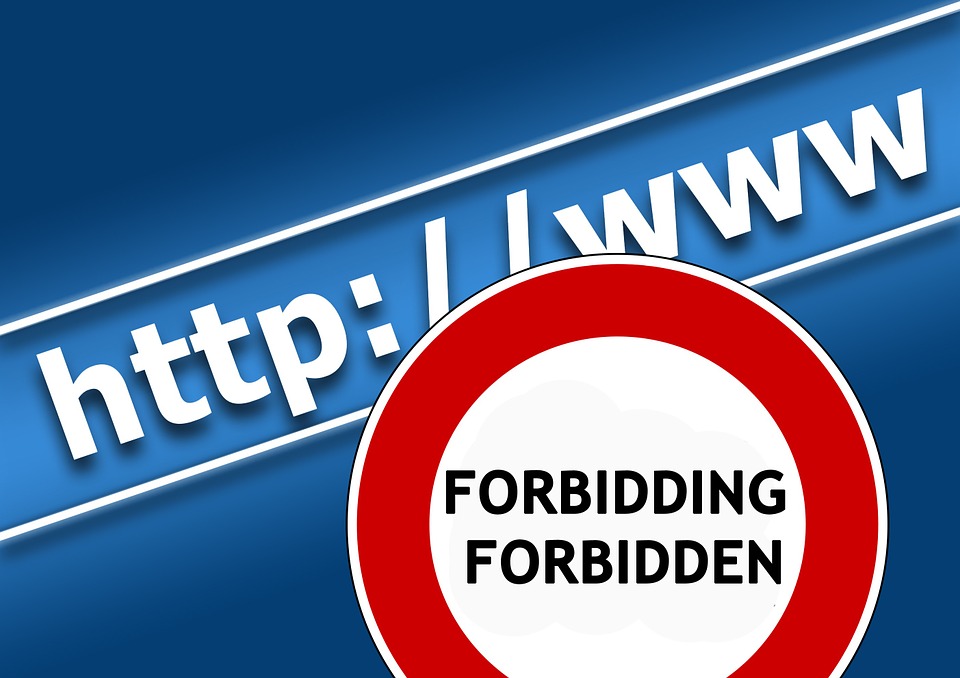You’ve invested a lot of your money and time to obtain a good site that makes profits for your business. Your domain name has turn out to be your online brand and it is one of the most precious assets of your business. But, the question is, are you actually doing everything to secure of protect your domain-name? There are several common mistakes that can cause the permanent lost of your domain-name. In this tutorial, we are going to explain you the most common causes of why domain-names are lost and also demonstrate you how to safeguard your domain name.
Common Reasons of domain-name loss
The most common reasons loss of domain-name consists of:
- Outdated or Inaccurate registrar contact information
- Domain name theft
- Domain name expiration
-
Outdated or Inaccurate registrar contact information
If the registrar of your domain name is unable to contact you, they cannot remind you for notifying or renewing you if there are apprehensive behaviors on your account. Keep all your account contact details updated. Besides sending account summaries and renewal notices, your domain registrar might make use of your contact details for your account management features for example sending forgotten passwords, account verification etc. Also, you should keep the billing information of your account, particularly if your domain-name is set for renewing automatically. When you send your contact e-mail ID, employ a permanent email ID (the one that you’ll employ and keep forever). Do not use one from a free-service which might terminate if you do not make use of it on a regular basis.
-
Domain-name expiration
In the similar way that a vehicle has an ownership record, so do domains. At what time you register your domain name, you keep the domain name ownership for a certain point of time. On the yearly basis, you expand your ownership over your domain-name simply by renewing it before it is about to end of its registration period. The most common reason that people just lose their domain-name is that they do not succeed to understand the domain-name had already expired
Keep the record of the expiry date of your domain name. In case you have over a single domain name, think about combining your domains with your registrar who provides amazing features of domain consolidation.
This enables you to create a master account and have all your unique domain-names and expiry date on the cPanel, and make changes into all of your domain-names right away.
Think about renewing your domain name in advance and for a longer point of time. If your domain is important for your business, then you might wish to renew the same before time and choose to renew it for a long period. If your registrar provides you the facility of domain auto-renewal then don’t miss it. By choosing the option of domain auto-renewal, your registrar will move on to renew your domain before it gets expired. Also, you are suggested to keep your contact details updated. The majority of domain expirations are led by failure to obtain renewal notices.
The majority of registrars don’t send renewal notices through your postal mail. This simply implies that if your e-mail ID is old, then you won’t get renewal notices. You can add the domain name of your registrar into your main account list of spam filter “approved-sender”. Frequently, if you’re making use of a spam-filtering service, then possibly all your domain renewal notices are transmitted to the Junk or Spam folder.
-
Domain name theft
Well, domain names can easily be stolen or hijacked if you don’t take care of it. A number of domain hijackers or spammers “steal” your domain-name by submitting a fake request of domain transfer and trapping a simple domain owner into providing them the gaming control. Here, legal alternatives can be time consuming and expensive. You will need to be very careful who is getting listed in your domain-contact details. Your company or you should be listed as administrative contact or owner of the domain, not your web designer or your webmaster.
Apply Registrar Lock. The majority of registrars provide you a service known as Domain Lock or Registrar Lock which can aid to put off your domain from being illegally or accidentally transferred without your consent. Whenever a domain name gets locked then it can be transferred only when you log-in your account and unlock the same. Since Registrar Lock will not secure you from anybody who has all the access to your account, but it can produce additional obstacles for somebody who is attempting to get the domain name transferred. Choose the option of Domain Privacy. This is a feature that the majorities of registrars provides for a small fee (monthly) or for free. This feature prevents your contact information, address and your name from being made publicly accessible in Whois records.
A number of domain hijackers extract the Whois records for such details so that they can imitate you and try to have your domain shifted. A few might also try to get in touch with you to trick you into disclosing your account password.
Select a strong-password when making your account for your domains. Your account is the place where you can handle the features and settings of your domain-name, like domain contact details and information, DNS changes, renewals, and transfers etc. Definitely you do not want illegal persons to access your account. Always pick strong passwords combined with lower-case, upper-case letters, numbers, and mixed characters. This will help to make your password difficult to try or guess.
Be careful of any domain name connected association you don’t identify. It is understood that devious registrars and domain hijackers transmit mass amount of domain-transfers veiled as domain-renewal alerts. Also, only some of the puzzled registrants inadvertently verify the transfer is sufficient to make it worth the while. When unsure, get in touch with your original registrar for validating any distrustful snail-mail or emails.
How to protect a Domain name
Just imagine that your contracted web developer taken down, redirected or hijacked your site by getting control of your site’s domain-name. Sadly, this situation may arise if you don’t take required safety measures to secure your domain-name. Think about the below mentioned steps to protect your virtual property.
-
Create a method for renewing your domains frequently
The simplest method to miss out a domain-name is just by overlooking to renew it sooner or later. Creating a renewal procedure can be as easy as preparing a frequent renewal memento in your PC calendaring-program for warning you a month before each of your domain-name is because of expiration. Now, several registrars permit you to synchronize domains so they terminate on the exact same day, to make is simpler to handle more than one.
You can usually choose to renew domain names for one, two, five or ten years, but be careful about choosing anything longer than one year – renewing is something that is much more likely to slip your mind if you don’t have to do it regularly. Also, you may be capable to choose your domain-name renewed automatically, however this is expected to boost the risk that you do not miss your track of domain-name plus their expiry dates.
-
Keep your account Safe
A person who can access your account on the official website of the domain registrar can potentially take over your domain-name or sent it to your new owner, thus it’s important that your account is safe. That implies that it is vital to make sure that your account is secured by a powerful and long password that cannot be easily bruteforced or guessed by spammers or hackers. Also, you should employ any extra methods of authentication (like two-factor authentication with the use of a one-time passcode or a security token delivered by SMS to a mobile phone) if your registrar provides them. Also, it’s vital to make sure that the account password is changed if somebody accountable for your domains leaves your company.
-
Check the contact information held by your domains registrar frequently.
Your domain-name registrar have to transmit a reminder through e-mail when your company want to renew its domain name, and may also require contacting you if there’re some sort of payment related issues or somebody tries to transfer your domain-names. Hence, it’s vital to check that the existing contact information it has are updated. It’s particularly vital to make sure that the contact information is up to date if the person in your company who is liable for domains-registrations leaves, and it is also prudent to shortlist the address of your domain name registrar in your spam filters for making sure that you get any e-mails it sends.
-
Choose your Domain Privacy.
Most of the registrars provide domain privacy for free or for a small monthly fee, allows you to protect your name, contact details and address being made freely accessibly in Whois records. Domain name hackers can use this information for imitating you and try to have your domains transferred to a latest owner, or to get in touch with you to attempt you into disclosing your account password.
-
Apply account password.
Most of the registrars provide a service known as Registrar Lock (also referred to as Transfer Lock or Domain Lock), which can aid to prevent your domain-name from being illegally transferred without asking for your permission.
-
Employ permanent email ID
At what time you mention your contact email ID, ignore employing one from a free-service that might terminate if you do not use it on a regular basis.
If that occurs again somebody else could grab it to imitate you along with your domain-name registrar or employ the “forgotten password” feature of your registrar to have the password sent to them.
-
Employ EPP
EPP gives one extra layer of security for your domain-name, it the same is supported through your registrar. It allows you to choose an exclusive AIC (Authorization Information Code) for every domain, which has to be transferred to a new registrar before the domain-name can be sent to it. In case your AICs are kept confidential and secure this can give great security for your domain name, but be careful: A few registrars can make them accessible to anybody who can sign-in to your account, successfully rendering them futile.
-
Be wary of emails claiming to be from your-registrar
Do not react to e-mails asking you for log-in to your account and manage your domains just by clicking on links included in the e-mail. That is since the e-mail could be weaponised plus the hyperlinks could get you to an imitation of the website of your registrar where your account information can be obtained. To ignore this you will always need to type the URL of your registrar into your web browser before signing in.



